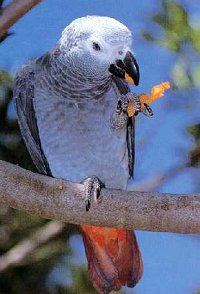|
The Society:
 HOME
HOME
 Introduction
Introduction
 Objects
Objects
 Join or renew
Join or renew
 Guest Book
Guest Book
 Hall of Fame Hall of Fame
 Products For Sale
Products For Sale
 Classifieds Ads
Classifieds Ads
 Contact Us
Contact Us
The Avicultural Journal
 Journal Archives
Journal Archives
 Exotic Bird Species
Exotic Bird Species
 Budgerigar Information
Budgerigar Information
 Canary Information
Canary Information
 Parrot Information
Parrot Information
 Finch Information
Finch Information
 General Information
General Information
 First Breeding Awards
First Breeding Awards
Affiliations:
 Affiliated Clubs
Affiliated Clubs
 Parrot Association of Canada
Parrot Association of Canada
 Avian Preservation Foundatn
Avian Preservation Foundatn
Showing Birds:
 Canadian Shows
Canadian Shows
 National Results
National Results
 Accredited Judges
Accredited Judges
Leg Bands:
 General Information
General Information
 Band Size Chart
Band Size Chart
 Trace a Band
Trace a Band
 Band Prices
Band Prices
 Order Bands
Order Bands
 Current Ring Codes
Current Ring Codes
Links:
 Links
Links
 Copyright & Privacy Policies
Copyright & Privacy Policies
|
CONGO
AFRICAN GREY PARROT
Psittacus erithacus
 Talking ability: Excellent
Talking ability: Excellent
Noise level: Moderate
Cage requirements: 24 x 24 inches; bar spacing 3/4" Or 1"
Length: 14 inches
Life span: 40-50 years
Incubation: 28 days
Age at weaning: 14-16 weeks
Age at maturity: 3-4 years
Country of origin: Equatorial Africa
Description: Overall color is varying shades gray; bare skin patch around eyes; eyes of young birds are gray, but change to grayish-yellow in adulthood.
Characteristics: African Greys are extremely bright and charming companions. These parrots are often very good talkers. We recommend DNA sexing by three years of age.
Behavior:Temperament The African Grey is extremely intelligent, perhaps topping all other parrots in it's ability to learn new things throughout a lifetime. Adult greys are considered shy and introverted, and usually bond with only one person, being aloof with everyone else. They are also one of the most rigid and pattern oriented of all parrots, being keenly observant and sensitive to the slightest change in routine. Excellent talkers and mimics, these birds can accurately imitate specific human voices and household noises such as the doorbell, telephone, or microwave. As very empathetic and emotional birds, greys have distinct personalities and can be demanding of their owner's time and attention.
Diet: African Greys are very susceptible to calcium deficiencies, due to their unique physiology. Parrot "mixes" are not balanced diets. These seed blends are loaded with fat, deficient in vitamins, minerals and proteins. Factory enrichment of these seed mixes doesn't lead to a balanced diet. Recommendation: Feed 80% of caloric intake with a formulated diet pellets, crumbles), such as Harrison's or Roudybush. Other national brands available include: Zupreme, Exact, Pretty Bird, Hagen. Feed 20% of the caloric intake with: scant amount of seed, fresh leafy or orange-colored vegetables, starches (rice, bread, pasta, banana), small quantities of people food items (food groups from the kitchen). Emphasize calcium rich treats including almonds, cheese, kale, collards. Pretty Bird now markets an "African Grey" formulated diet.
Natural habitat Forested plains: Birds go on foraging excursions to sparsely wooded savannas and to open country. Their distribution is largely identical to the range of the African oil palm, the fruit of which forms the bulk of the bird's diet.
Home Environment: African Greys enjoy toys; stick to safe, sturdy commercial products. Free flying in the house for exercise is hazardous. Uncaged African Greys should be closely supervised because they can be very destructive to home furnishings. We recommend newspaper or equivalent for cage bottoms. Good room ventilation is very important.
Health: Young African Greys are very susceptible to psittacine circovirus (PBFD). Avoid exposure to other Old World birds, particularly lovebirds. Young and mature African Greys are sometimes susceptible to chlamydia, bacteria, or fungal infections. African Greys should be closely monitored for proper calcium metabolism, by diet monitoring and testing. Low blood calciums can result in fatal seizures.
Interesting facts: There is still some controversy over whether the African Grey parrot is merely a superb mimic, or truly understands some of what it says. These birds possess an uncanny knack for using words in a situationally appropriate manner, leading some people to believe they have the mentality of a three year old human child. This belief is supported by an ability to problem-solve, as demonstrated by the famous grey parrot, Alex.
|